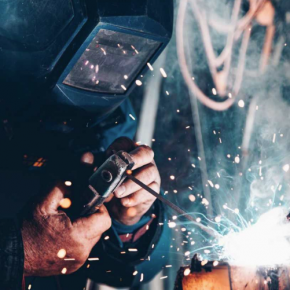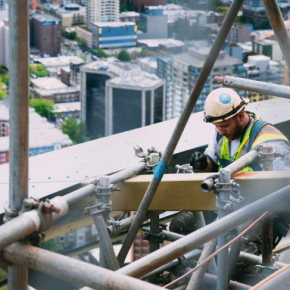
GUEST ARTICLE: What Does Health and Safety Look Like in Construction in 2018?
This article from businessman Luke Conod looks at where we currently stand in regards to all areas of onsite safety, as well as what is in store for the industry looking ahead.
“For as long as there have been buildings constructed, health and safety have always been important – and especially so in the modern age, thanks to advances in technology that allow construction to be a far safer endeavour than in previous centuries.
The health and safety landscape is always changing and reacting to new technology and legislation. Below, we’ll take stock of where we are with regards to every aspect of onsite safety – and what the future holds for the industry.
Augmented and virtual reality
You might think that AR and VR are simple gimmicks used in mobile phone apps and in gaming, but recent advances in machine learning technology have allowed for these technologies to proliferate in the construction sector.
AR is used to combine the design and construction processes, so onsite operators can see what needs to be built alongside vital metrics. American startup DAQRI is pioneering this, with their Worksense AR headsets that can allow workers to virtually tag objects onsite, sharing vital information instantly with management and other workers using their headsets – making safety-related issues much easier to flag.
In terms of VR, the ever-decreasing cost of the technology means that it’s being used more and more in workplace hazard training. VR training scenarios use real BIM (Building Information Modelling) data for added realism, to make sure workers are fully immersed in the safety briefing.
The evolution of PPE
Personal Protective Equipment is a vital safety consideration for any site, and there have been advances galore on this front over the last few decades. In days gone by, PPE simply meant a hard-wearing pair of jeans, for example, and some durable gloves for tough jobs – but while these elements are still undoubtedly important, thankfully, legislation has meant that PPE is very different now.
Compulsory hard hats, eye protection and high-visibility workwear made from advanced water-resistant fabrics are now ubiquitous. Wearable tech is a new frontier on the PPE scene, symbolising a key shift in how PPE is thought of – far from being the last line of defence from an accident, PPE integrated with sensors can alert the wearer to potential dangers before they happen.
The holistic side
Health and safety best practice isn’t just about preventing accidents and training staff to avoid dangerous situations – construction companies need to cast an eye over the mental and holistic wellbeing of their workforce to avoid problems further along the line.
Willmott Dixon’s recent commitment to training 130 mental health first aiders is welcome news in the industry, especially given the recent upswing in mental health awareness all across the UK media. The company highlighted the fact that 85% of the UK construction workforce feel that mental health issues are not adequately addressed.
Taking a holistic approach to health and safety and incorporating mental health as a key segment is very important – and is arguably the most important aspect of the current state of health and safety.
The temptation might be there to utilise advanced safety technology to demand more from their employees, but this risks disharmony and accidents – so taking this holistic and measured approach makes the best sense for onsite worker and boardroom decision-maker alike.
Latest news
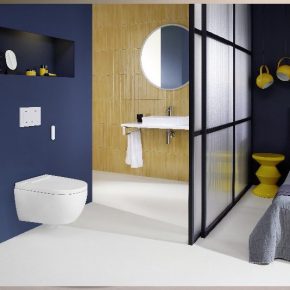
23rd April 2024
Geberit brings Parallel World to Clerkenwell Design Week
Visitors to this year’s Clerkenwell Design Week (21 – 23 May) can step into a parallel world and discover the benefits of cleaning with water, thanks to Geberit.
Posted in Articles, Bathrooms & Toilets, Bathrooms, Bedrooms & Washrooms, Building Industry Events, Building Industry News, Building Products & Structures, Building Services, Exhibitions and Conferences, Innovations & New Products, Interior Design & Construction, Interiors, Plumbing, Restoration & Refurbishment, Retrofit & Renovation
23rd April 2024
Mitsubishi Electric Ecodan Heat Pumps and Water Cylinders to be stocked by The Boiler Shop
Mitsubishi Electric’s full range of Ecodan heat pumps and hot water cylinders are to be stocked by one of the north-west’s best established independent merchants, The Boiler Shop.
Posted in Articles, Building Industry News, Building Products & Structures, Building Services, Facility Management & Building Services, Heating Systems, Controls and Management, Heating, Ventilation and Air Conditioning - HVAC, Plumbing, Posts, Retrofit & Renovation, Sustainability & Energy Efficiency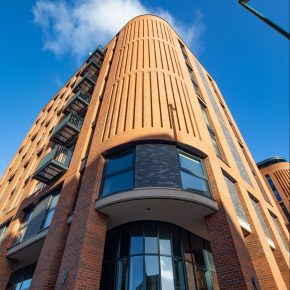
23rd April 2024
Trio of Senior products used in new Nottingham residential scheme
Solutions from Senior Architectural Systems have helped complete The Barnum – a new residential development on Nottingham’s Queen’s Road.
Posted in Aluminium Products, Articles, Building Industry News, Building Products & Structures, Building Systems, Case Studies, Curtain Walling, Doors, Glass, Glazing, Posts, Restoration & Refurbishment, Retrofit & Renovation, Walls, Windows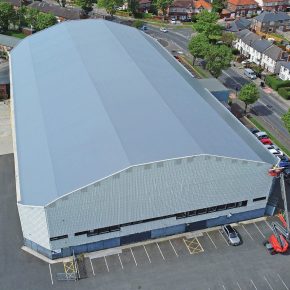
22nd April 2024
New EJOT role will develop strategic support for UK flat roofing sector
EJOT UK has taken a major step in the expansion of its support for the flat roofing market by appointing one of its most experienced building envelope fastening specialists as its first sector-dedicated business development manager.
Posted in Articles, Building Industry News, Building Products & Structures, Building Systems, Innovations & New Products, Posts, Recruitment, Restoration & Refurbishment, Retrofit & Renovation, Roofs
 Sign up:
Sign up: 